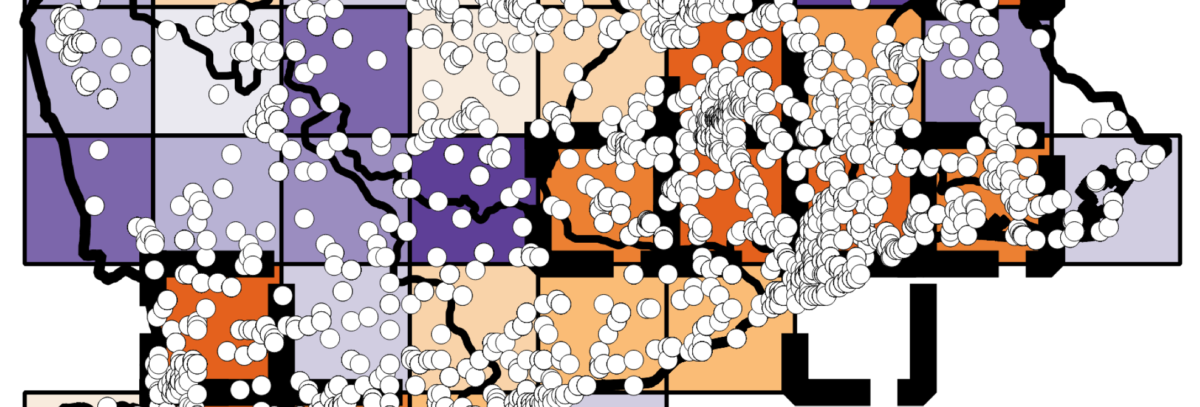Biodiversity informatics tells us what we know about which species of plants and animals live where. But, just as importantly, it also helps identify what we don’t know.
In a new paper, JRS Grantee, Dr. Alex Asase of the University of Ghana (JRS grant page), along with co-author Dr. A. Townsend Peterson of the University of Kansas (JRS grant page), provides an excellent demonstration of how digitally accessible biodiversity information can be used to find the edges and gaps in what we know. Dr. Asase has lead recent efforts to assemble as many of the records of the plants of Ghana held by museums across the world as possible, translating them into digital formats and making them digitally available for research and management. He estimates that more than 90% of all of the records that are held in herbaria in Ghana have so far been digitized, and a small portion of the extranational museum records are published in venues like GBIF. The study drew on more than 38,000 occurrence records of plants collected across the country, dating as far back as 1830. But the question is: how much of Ghana’s plant diversity does this actually capture?
One key finding is that the available records were not evenly spaced across the country, and were not collected consistently over the past two centuries. The authors identified several biases in the available data: plants were disproportionally collected from areas close to roads, and during the dry season. These trends aren’t entirely surprising, occurring at the times and places where collection work is most efficient. But they also mean that we know less about remote areas, and less about the plants that are only apparent during the rainy season. Knowledge gaps might lead scientists and decision-makers to be cautious in interpreting analyses of biodiversity patterns, such as designating biodiversity hotspots, or assessing threatened populations, because apparent patterns might instead reflect data collection biases.
There is a substantial number of Ghanaian plant records, held primarily by museums in North America and Europe, not yet digitally accessible. Dr. Asase’s work with JRS continues to try to ‘repatriate’ such information to gain a more complete picture of the state of knowledge of Ghana’s flora.
This publication resulted from collaboration of two JRS grantees, and was initiated at a JRS-funded workshop on National Biodiversity Diagnoses in Uganda in 2015.
JRS believes that investments in grantee projects are more likely to be sustained when the data generated serves the near-term and concrete needs of decision-makers. Identifying these gaps in biodiversity knowledge provides possible geographic, taxonomic, or temporal targets for future surveys, with the goal of obtaining a more complete picture of the flora of Ghana. Further, overlaying the digital biodiversity data gaps with other data layers that reflect national policy priorities (e.g., water resources), could suggest where biodiversity data collection is needed to inform conservation and sustainable development decisions.
Read the full paper in the online journal, Biodiversity Informatics, which hosted by the University of Kansas Libraries, here.

